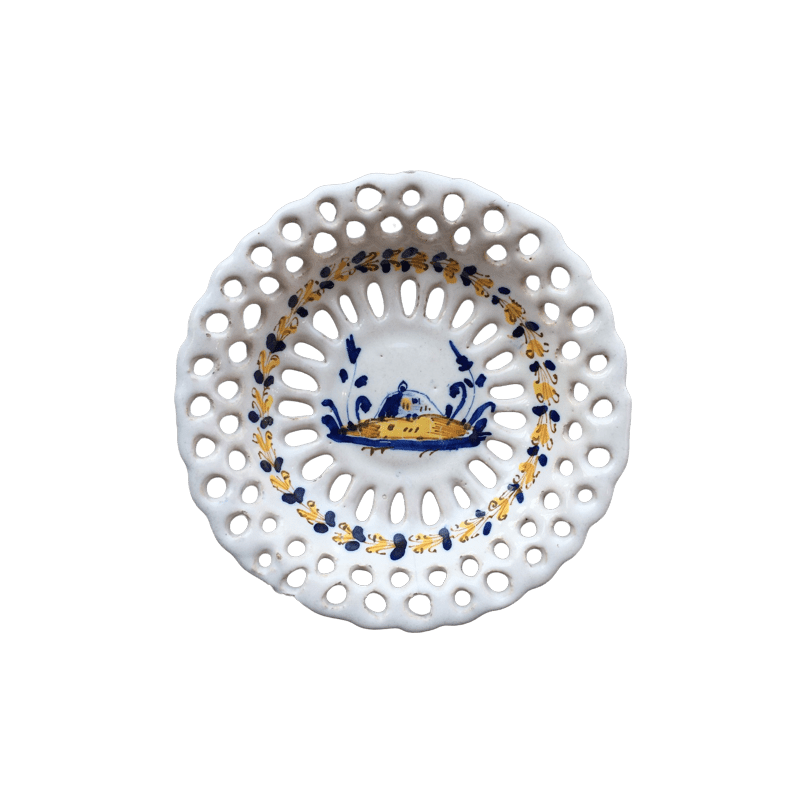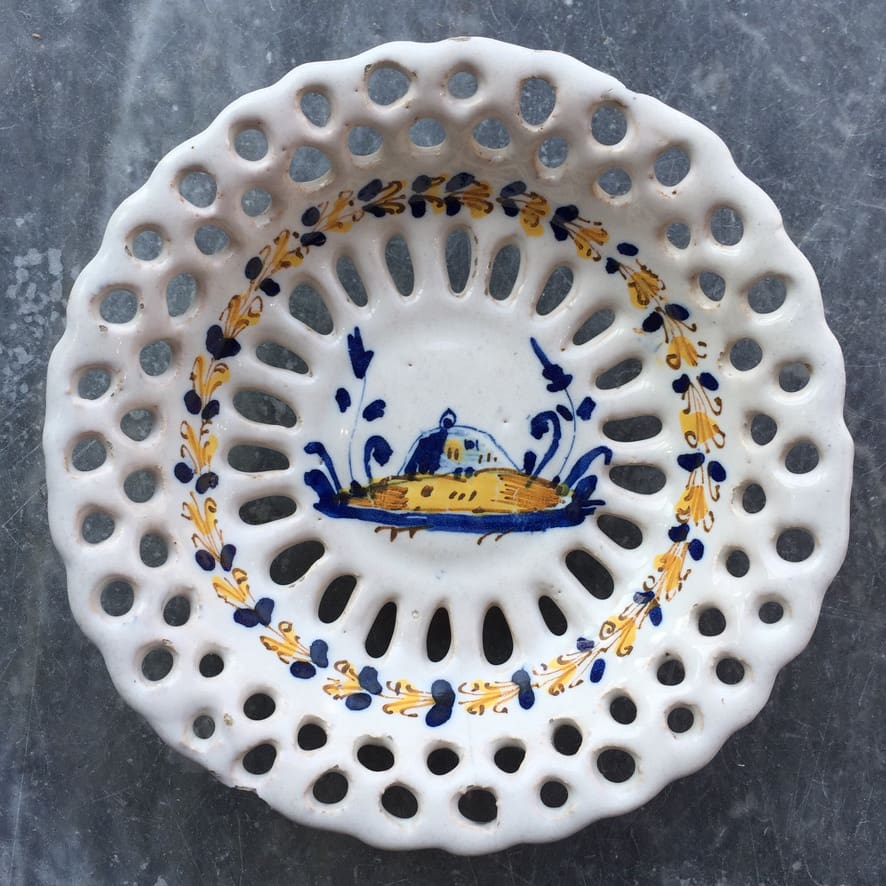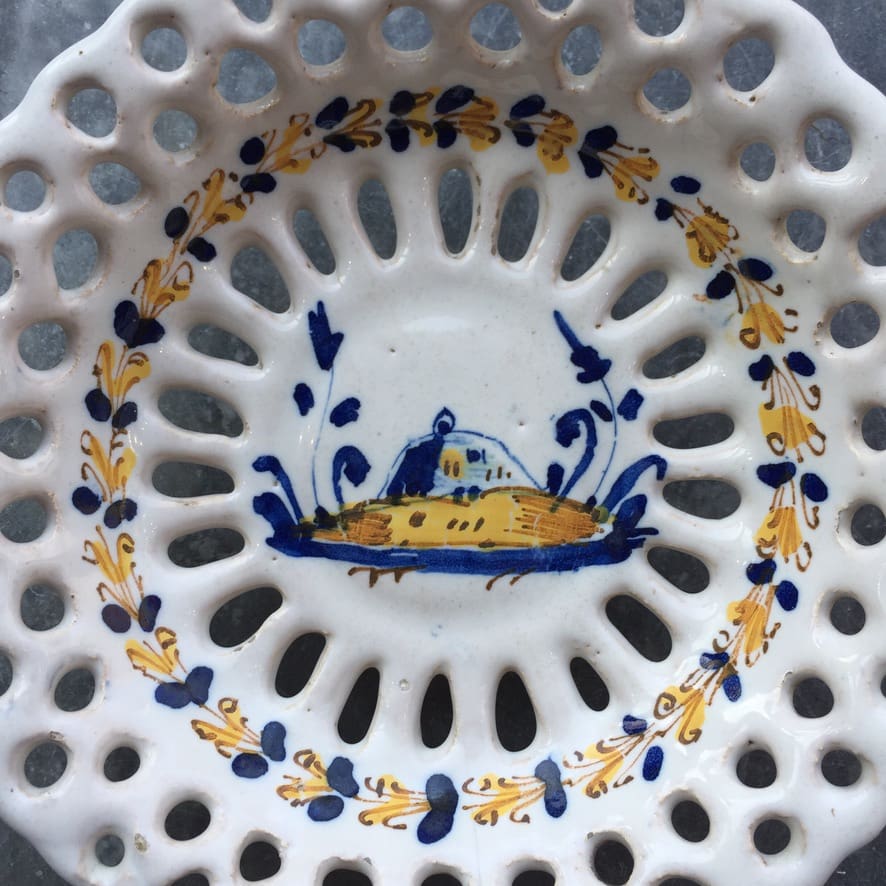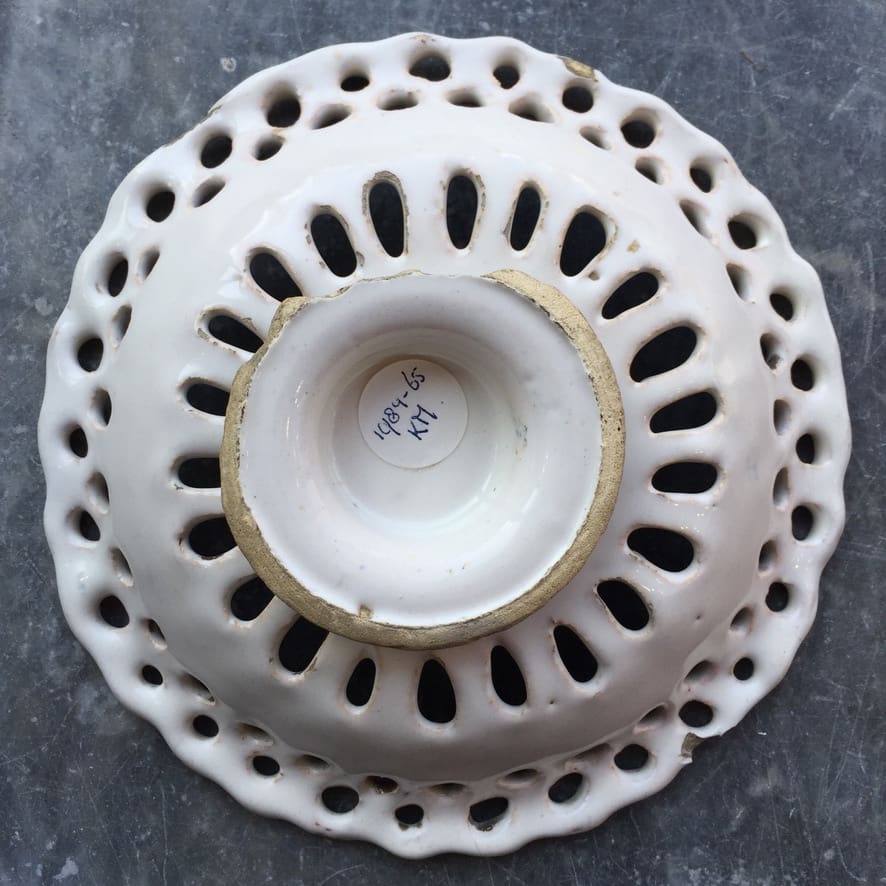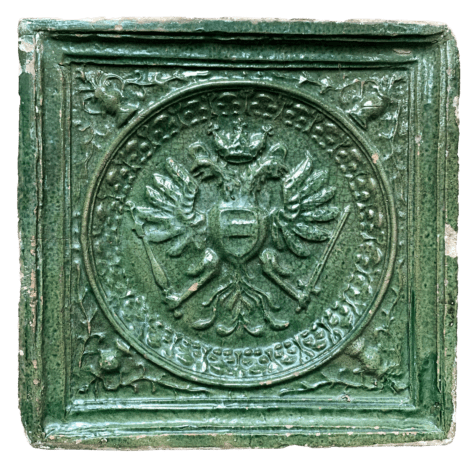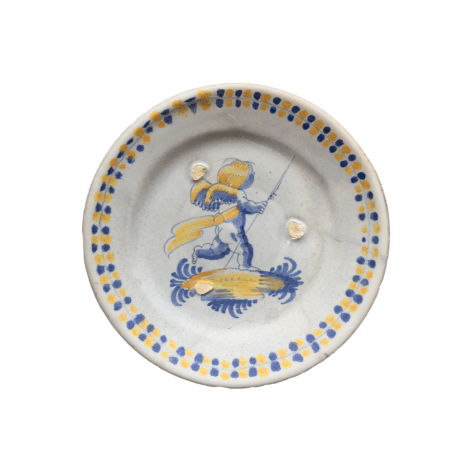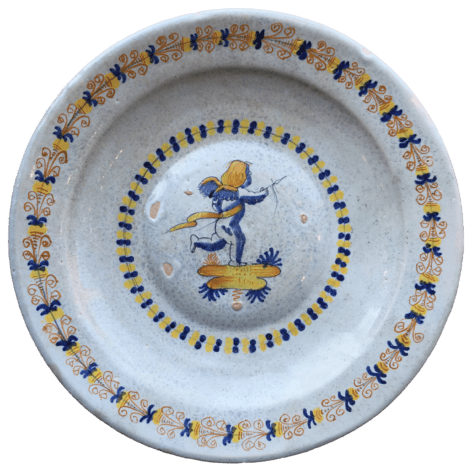| Your cart is currently empty. |
Ligurian Perforated Fruit Bowl
€1250
Ligurian Perforated Fruit Bowl
€1250
In stock
Liguria – Italy
Circa 1600 – 1625
The bowl on a footring is moulded with three rows of perforations. A small building is placed on a ground with vegetation. A band of Aigrettes consisting of blue and brown hatches has been painted between the rows of perforations. The brown hatches are filled with yellow blobs.
This style of decoration is called ”compendiario” consisting of a white background with limited decoration in contrast to the ”historiato” in which the entire piece is decorated as if it were a painting. It is a style appreciating the white more and more.
This type of faience with this type of aigrette decoration has until recently been described as originating from Faenza Italy. The Italian specialist on faience from Faenza, Carmen Ravanelli Guidotti, is of the firm opinion that this type of faience does not come from Faenza but Liguria.
Lit. Italiaanse Grotesken en Crabben in Haarlem, J. M. Baart, Haarlem 2008.
Specifications
We provide free worldwide shipping on all orders above € 75. We understand the value and importance of your antique items. That’s why we prioritize safe and secure shipping, ensuring that your antiques are protected every step of the way. Using only the highest quality packing materials, such as heavy-duty cardboard boxes, bubble wrap, foam, and foam chips, to ensure that your items are protected during transit. Each shipment is fully insured and prepared with all the required documents to pass customs when ordering from outside the European Union. By using only expert shippers such as UPS and DHL, required documents are directly sent to customs to ensure a smooth and fast delivery.
The authenticity of all objects is guaranteed. When ordering an object, a certificate of authenticity will be provided with your purchase. All delftware are handmade antiques that are mostly hundreds of years old, therefore it is quite normal that they show signs of wear due to use. Characteristic for Dutch Delftware are also the small chips around the edges which are considered signs of authenticity.

